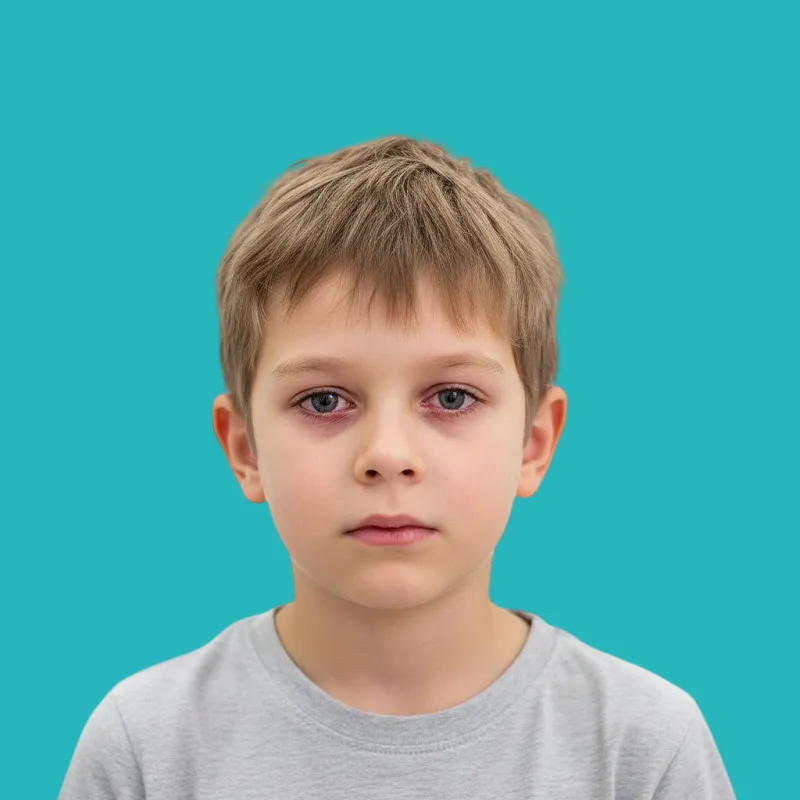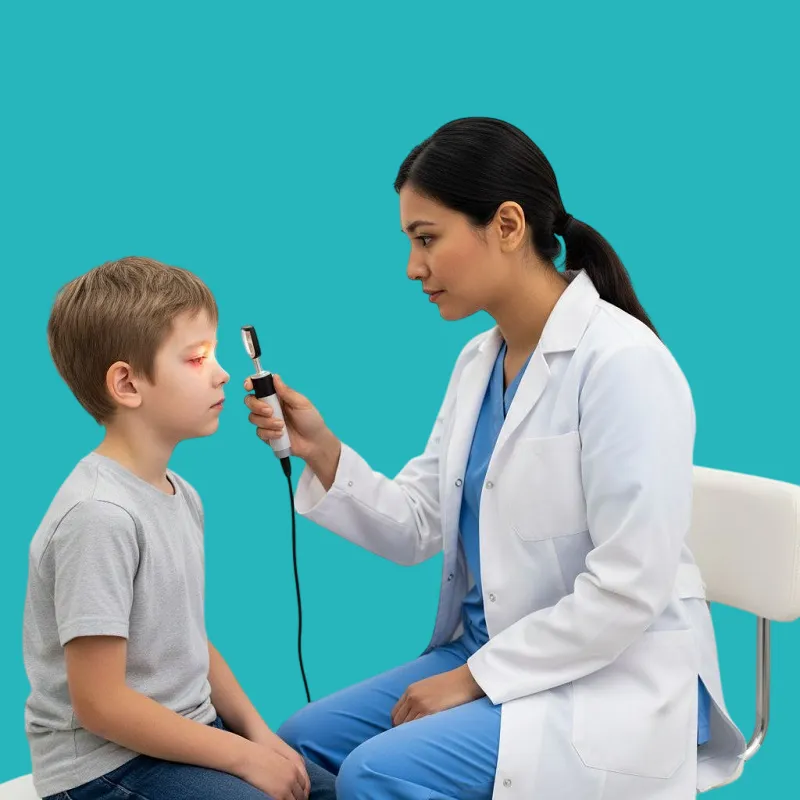Dry eye in children is a common condition that causes discomfort, burning, and insufficient natural lubrication.
Treatment for dry eye aims to improve eye lubrication and reduce redness and irritation, restoring the child's natural comfort.
What is dry eye in children?
Dry eye in children occurs when the eyes do not produce enough tears or the tears evaporate too quickly, leading to irritation and redness, such as:
- A stinging or burning sensation in the eyes.
- Sometimes blurred vision.
- The child's urge to rub their eyes.
- Dry skin around the eyes.
Causes of dry eye in children

The causes of dry eye are varied and include environmental and health factors, such as:
- Prolonged screen time.
- Low humidity in the air or sleeping under air conditioning.
- Seasonal allergies.
- Minor eyelid infections.
Symptoms of dry eye
The symptoms of dry eye are clearly visible and easily noticeable, such as:
- Chronic redness in the eyes.
- Annoying itching or constant rubbing.
- Light tearing without proper lubrication.
- A feeling of a foreign body in the eye.
Diagnosis of Dry Eye
Diagnosis of dry eye depends on a doctor's thorough assessment of the eye's condition, such as:
- Checking the amount of tears on the eye's surface.
- Assessing the activity of the tear glands.
- Confirming the absence of infection or severe allergies.
- Asking parents about the child's daily habits.
Treatment of Dry Eye in Children
Treatment of dry eye in children focuses on simple and effective steps to improve lubrication, including:
- Using preservative-free lubricating eye drops.
- Reducing screen time to alleviate eye strain.
- Humidifying the room with a simple vaporizer.
- Encouraging the child to blink more.
When to See a Doctor?

Some cases of dry eye require immediate medical intervention, including:
- No improvement within two days.
- Severe eye pain.
- Yellow or white discharge.
- Noticeable vision impairment.
Complications of Neglecting Dry Eye
Neglecting dry eye in children can lead to more serious problems, such as:
- Chronic inflammation of the eye's surface.
- Increased eye sensitivity to light.
- Difficulty focusing due to discomfort.
- Potential corneal abrasion.
How to Prevent Dry Eyes
Prevention is key to reducing the occurrence of dry eyes in children. This includes:
- Limiting screen time daily.
- Staying hydrated.
- Avoiding direct airflow from fans and air conditioners.
- Keeping eyelids clean.
Frequently Asked Questions
Is dry eye in children dangerous?
It's usually not dangerous, but it requires prompt treatment to prevent infections.
Are lubricating eye drops safe for treating dry eyes in children?
Yes, preservative-free eye drops are safe when used as directed.
Do screens cause dry eyes in children?
Yes, prolonged use reduces blinking and increases dryness.
Does dry eye in children require antibiotics?
No, unless there is an accompanying bacterial infection, which is uncommon.
Article Summary
Dry eye in children is a common condition that can be easily treated with lubricating eye drops, reducing screen time, and improving humidity.
Daily preventative measures such as drinking water and cleaning the eyelids can help reduce symptoms, improve eye comfort, and protect the child from complications.